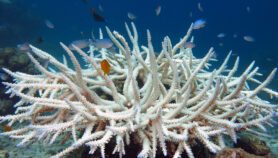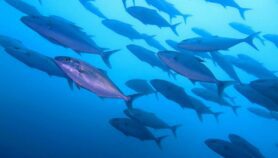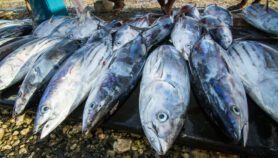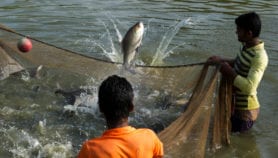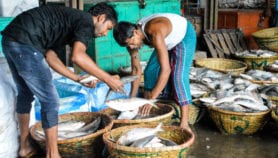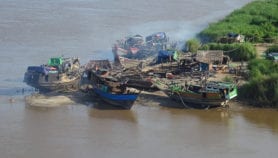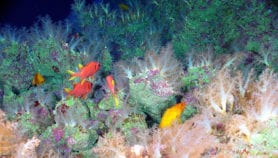22/10/18
Philippine fish catches may dip from ocean warming
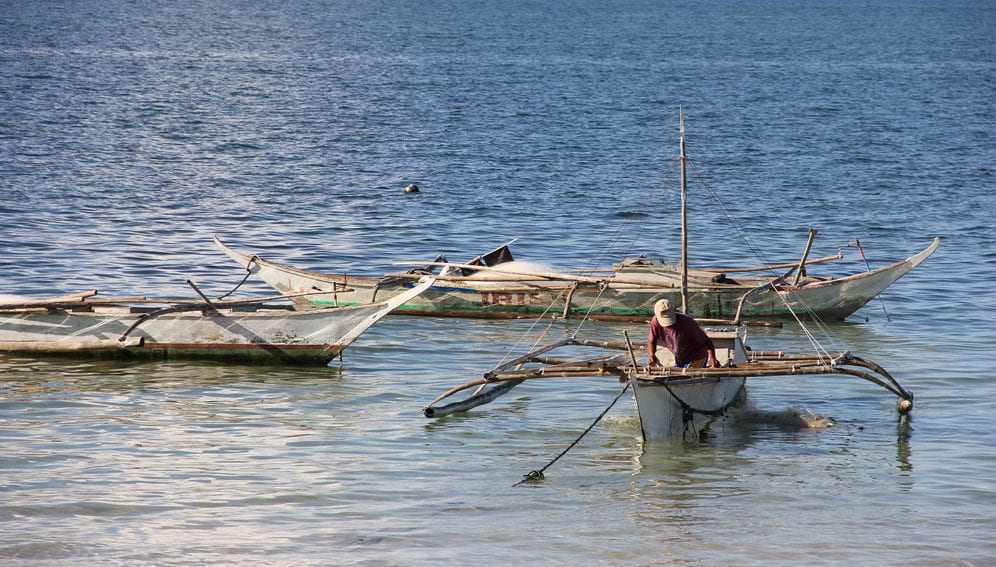
By: Paul Icamina
Send to a friend
The details you provide on this page will not be used to send unsolicited email, and will not be sold to a 3rd party. See privacy policy.
[MANILA] Up to a quarter of Philippine marine fisheries harvest could vanish by 2050, according to projections made in a new study on the marine impacts of climate change.
According to the study, popular local marine fishes such as bolinaw (Philippine anchovy); tangigue (Spanish mackerel); espada (largehead hairtail); alumahan (Indian mackerel); salmonete (Red Mullet); sapsap (pony fish); dorado (dolphin fish); and malasugui (blue marlin) face local extinction or decimation.
“Being near the equator and having some of the warmest waters in the world, further warming would bring great uncertainty on the possible responses of marine organisms to continued climate change”
Rollan Geronimo, University of Hawaiʻi at Mānoa
Conducted by Rollan Geronimo, marine ecologist at the University of Hawaiʻi at Mānoa and member of the Coral Reef Ecosystem Programme of the National Oceanic and Atmospheric Administration, Washington, the study evaluated the future suitability of the Philippine seas for 59 species now extensively sold in public markets.
The study found that warmer waters would drastically change the habitat for all 59 species and affect harvests, with existing habitats no longer tolerable for mackerel and large pelagic species.
“The eight species vulnerable to local extinction could be used as climate indicators given that these species could already be living near their thermal thresholds,” Geronimo says. “Being near the equator and having some of the warmest waters in the world, further warming would bring great uncertainty on the possible responses of marine organisms to continued climate change.”
Fish caught in the Philippine waters are some of the most affordable sources of protein. Over 1.7 million of the country’s fisherfolk depend on the seas for catch and livelihood.
“If global mitigation of greenhouse gases is implemented intensively by the 2050s, the seas in the Philippine Exclusive Economic Zone would be warmer by 0.77 degrees Celsius to 1.10 degrees Celsius. Salinity would be lower by 0.10 Practical Salinity Unit (psu) to 0.45 psu, the measured salinity of sea water,” says Geronimo.
“The worst case and the likely scenario, given the current rate of emissions and assuming minimal mitigation, would lead to much warmer (up to 3.1 degrees Celsius) and lower salinity in the Philippine seas,” he says.
“With the mild climate change future scenario, most species would experience a 15—30 per cent reduction in habitat suitability, driven mainly by the projected increase in sea surface temperature.”
Earlier, the UN’s Intergovernmental Panel on Climate Change warned in its fifth assessment report released October that climate change could cause ocean warming, acidification, sea-level rise and de-oxygenation, affecting marine ecosystems and fisheries.
Because of its tropical setting, the Philippine seas are among the warmest in the world and its fisheries are mostly confined to coastal waters of the complex archipelago.
Among the key findings of the study is that these seas have been warming since 1982 at an average rate of 0.2 degrees Celsius per decade — or an average absolute increase of 0.65 degrees Celsius from 1982 to 2017.
Angel Alcala, a Philippine national scientist and former president of Silliman University, points out that the species identified by the study are generally shallow water food fishes.
“Assuming ocean currents don’t change much, it could be expected that the deeper ocean waters (100-200 metres deep) would be cooler. Fish species that range from shallow reefs to deeper reefs could possibly escape extinction,” Alcala says. “This is the reason why we should identify species that can survive deep ocean habitats. They are the ones that could supply people the much-needed protein food.”
Rafael Ramiscal, chief of capture fisheries division of the Philippines Bureau of Fisheries and Aquatic Resources, expresses his other worries.“In addressing climate change, we should always recognise other threats to fisheries — there’s also overfishing, which adds to stress,” Ramiscal says.
He suggests strictly enforced policies to reduce pressure on fisheries. “This may be in the form of species-specific management measures, which may focus on the most at-risk species to climate change by 2050.”
This piece was produced by SciDev.Net’s Asia & Pacific desk.



